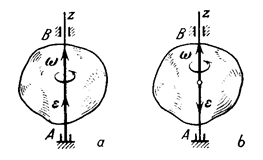
Заглавная страница Избранные статьи Случайная статья Познавательные статьи Новые добавления Обратная связь КАТЕГОРИИ: ТОП 10 на сайте Приготовление дезинфицирующих растворов различной концентрацииТехника нижней прямой подачи мяча. Франко-прусская война (причины и последствия) Организация работы процедурного кабинета Смысловое и механическое запоминание, их место и роль в усвоении знаний Коммуникативные барьеры и пути их преодоления Обработка изделий медицинского назначения многократного применения Образцы текста публицистического стиля Четыре типа изменения баланса Задачи с ответами для Всероссийской олимпиады по праву 
Мы поможем в написании ваших работ! ЗНАЕТЕ ЛИ ВЫ?
Влияние общества на человека
Приготовление дезинфицирующих растворов различной концентрации Практические работы по географии для 6 класса Организация работы процедурного кабинета Изменения в неживой природе осенью Уборка процедурного кабинета Сольфеджио. Все правила по сольфеджио Балочные системы. Определение реакций опор и моментов защемления |
Rotational Motion of a Rigid Body. Angular Velocity and Angular Acceleration.
Learn the following words and word combinations by heart:
Ex.1. Look at Appendices 1 and 2 and read the following mathematical symbols and Greek letters. φ = φ (t), Rotation of a rigid body is such a motion in which there are always two points of the body (or body extended) which remain motionless (see Fig.10). The line AB through these fixed points is called the axis of rotation. Since the distance between the points of a rigid body does not change, it is evident that in rotational motion all points of the body on the axis of rotation are motionless, while all the other points of the body describe circular paths in the planes which are perpendicular to the axis of rotation and the centres of which lie on it. To determine the position of a rotating body, let us pass two planes through the axis of rotation Az: plane I, which is fixed, and plane II through the rotating body and rotating with it (Fig. 10). The position of the body at any instant will be fully specified by the angle φ between the two planes, taken with the appropriate sign, which we shall call the angle of rotation of the body. We shall consider the angle positive if it is laid off counterclockwise from the fixed plane by an observer looking from the positive end of axis Az, and negative if it is laid off clockwise. Angle φ is always measured in radians. The position of a body at any instant is completely specified if we know the angle φ as a function of time t, i.e., φ = φ (t). (36)
Fig. 10
Eq. (36) describes the rotational motion of a rigid body. The principal kinematic characteristics of the rotation of a rigid body are its angular velocity If in an interval of time ∆t = t1 – t a body turns through an angle ∆ φ = φ 1- φ, the average angular velocity of the body in the given time interval is
The angular velocity of a body at a given time t is the value towards which Thus, the angular velocity of a body at a given time is equal in magnitude to the first derivative of the angle of rotation with respect to time. Eq. (37) also shows that the value of
as the radian is a dimensionless unit.
Fig. 11 The angular velocity of a body can be denoted by a vector Angular acceleration characterizes the time rate of change of the angular velocity of a rotating body. If in a time interval ∆t=t1–t the change of angular velocity of a body is The angular acceleration at a given time t is the value towards which
or, taking into account Eq. (37) Thus, the angular acceleration of a body at a given time is equal in magnitude to the first derivative of the angular velocity, or the second derivative of the angular displacement, of the body with respect to time. The dimension of angular acceleration is If the angular velocity increases in magnitude, the rotation is accelerated, if it decreases, the rotation is retarded. It will be readily noticed that the rotation is accelerated when By analogy with angular velocity, the angular acceleration of a body can be denoted by a vector
Comprehension check.
|
|||||||||||||||||||||||||||||||
|
Последнее изменение этой страницы: 2021-02-07; просмотров: 108; Нарушение авторского права страницы; Мы поможем в написании вашей работы! infopedia.su Все материалы представленные на сайте исключительно с целью ознакомления читателями и не преследуют коммерческих целей или нарушение авторских прав. Обратная связь - 3.138.174.95 (0.009 с.) |
 ,
,  ,
,  ,
, 

 and angular acceleration
and angular acceleration  .
. tends when the time interval ∆t tends to zero:
tends when the time interval ∆t tends to zero: or
or  . (37)
. (37) ,
,
 along the axis of rotation of the body in the direction from which the rotation is seen as counterclockwise (see Fig. 11). Such a vector simultaneously gives the magnitude of the angular velocity, the axis of rotation, and the sense of rotation about that axis.
along the axis of rotation of the body in the direction from which the rotation is seen as counterclockwise (see Fig. 11). Such a vector simultaneously gives the magnitude of the angular velocity, the axis of rotation, and the sense of rotation about that axis. , the average angular acceleration of the body in that interval of time is
, the average angular acceleration of the body in that interval of time is  .
. tends when the time interval ∆t tends to zero. Thus,
tends when the time interval ∆t tends to zero. Thus, ,
, . (38)
. (38) .
. along the axis of rotation. The direction of
along the axis of rotation. The direction of  when the rotation is accelerated (Fig. 11a), and is of opposite sense when the rotation is retarded (Fig. 11b).
when the rotation is accelerated (Fig. 11a), and is of opposite sense when the rotation is retarded (Fig. 11b).


